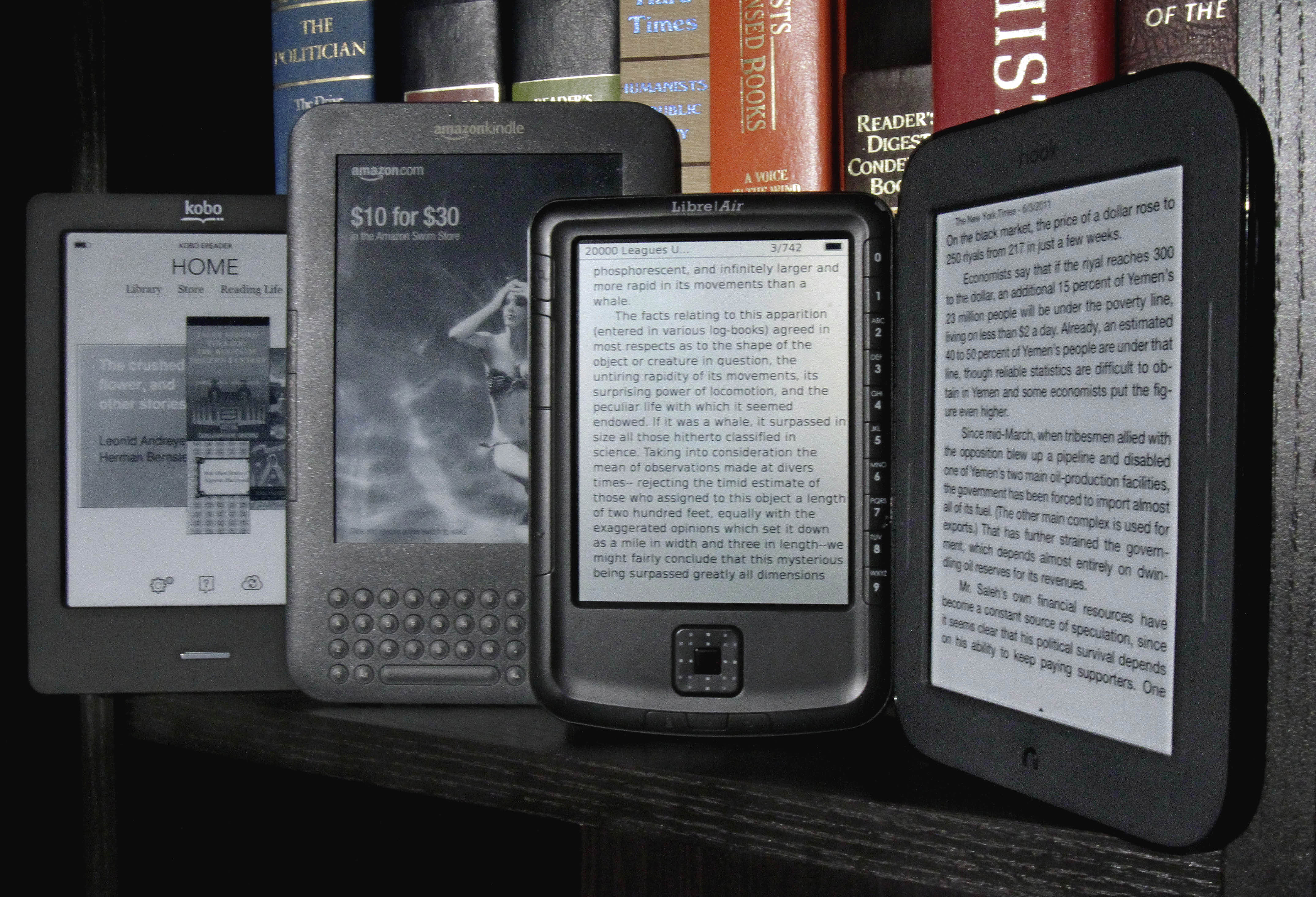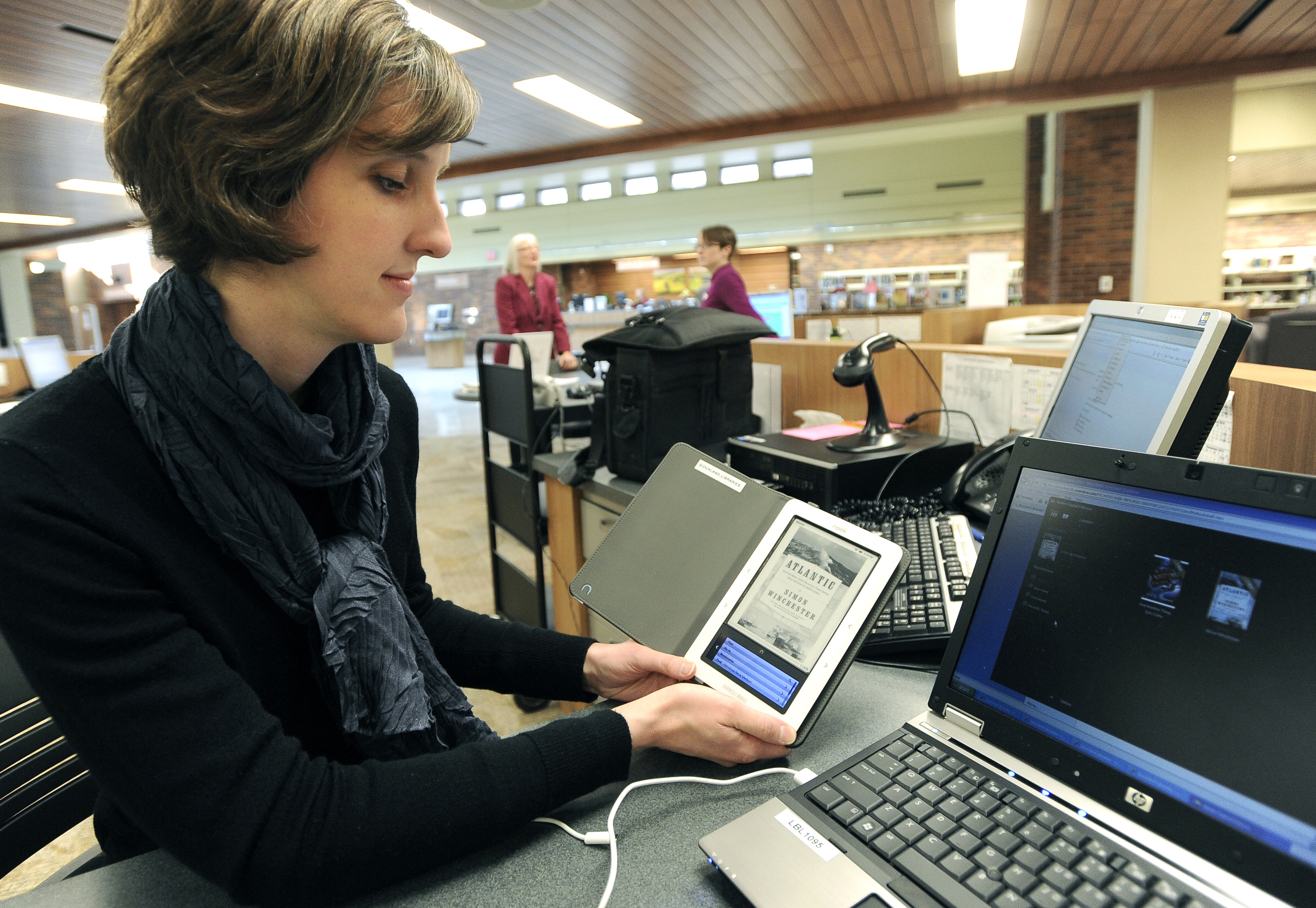E-book, or electronic book, is a collection of digital (numerically encoded) files containing the text, and sometimes the illustrations, of a book. E-books, which grew popular in the early 2000’s, are viewed on a computer; a type of cellular phone called a smartphone; a tablet (a small portable computer with a wireless Internet connection); or on a handheld device called an e-reader. There are many formats and programs used to store e-books and various e-readers or applications (apps for short) on which to read them. Some formats are incompatible with one another—that is, an e-book in one format will not work with an e-reader in another format.

E-books are available for purchase on the websites of publishers and online bookstores. Some libraries offer e-books over the Internet at no cost. E-books have some advantages over traditional paper books. E-books can be acquired instantly online through a computer, an e-reader, smartphone, or tablet any time of day or night. They are convenient for travel, as hundreds of e-books can be stored on a single device. The color, font, or size of the text can be adjusted on e-books to accommodate an individual reader’s preferences. E-books also have interactive features that may enhance the reading experience. Such features include touch screens and the ability to add bookmarks, highlight passages of text, and follow links to additional information. Some e-books also contain animation, audio, and video.

E-books first appeared in 1998, but they were not initially popular. The first e-books were read on a computer. Sony Corporation introduced the first e-book reader in 2004. The Japanese manufacturer sold its e-books in a format that could also be read on e-readers other than the Sony Reader. Sony manufactured e-readers until 2014.
The online retailer Amazon.com, Inc., introduced its e-book reader, Kindle, in 2007. Kindle became the first such device to have general appeal. In addition to displaying digital books, Kindle had built-in wireless capabilities that allowed customers to purchase and download products from the Amazon store straight onto the device. Beginning in 2009, Amazon released free Kindle e-book reading programs called apps for most major smartphones, tablets, and computers. Kindle spurred the company’s sales of e-books. The bookseller Barnes & Noble also offered a line of e-readers, called Nook.
Independent booksellers (privately owned bookstores that are not part of large chains or corporations) offered a brand of e-readers called Kobo, from the Toronto, Canada-based e-reading company Rakuten Kobo Inc. The company’s free reading app also allowed access to Kobo e-books on tablets, smartphones, or computers.
See also Amazon.com, Inc. ; Audiobook ; Computer (E-readers) .
